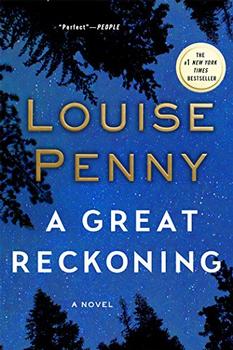Summary | Excerpt | Reviews | Beyond the book | Read-Alikes | Genres & Themes | Author Bio

From modern forensics to the realm of the Medicis, from the force of faith to the corruption of power, The Garden of Evil is a novel steeped in Roman history—and an unforgettable experience in richly atmospheric, modern-day suspense.
In a deserted artist's studio in the heart of Rome, detectives stumble upon a
scene of shocking brutality: two bodies, freshly killed. Looming over them is a
painting that bears all the hallmarks of a Caravaggio: a brilliantly colored
canvas depicting a violent tableau of beauty and depravity. . . . In David
Hewson's bold new novel of suspense, this grisly discovery sends Detective Nic
Costa on a desperate chase through the streets of his city. The consequences are
devastating. And for Nic, the case has only just begun.
At the crime scene, detectives find a treasure trove of evidence—from fresh
blood to lurid photos of dead prostitutes. For Costa, finding the killer who
escaped him is intensely personal. But his prime suspect arrogantly hides in
plain sight behind a fortress of money, power, and the law.
Teaming with an art expert, Costa follows clues hidden in the mysterious
Caravaggio canvas. As he moves through a maze of history, he begins to make
stunning connections to the present case. And each discovery brings him closer
and closer to a secret buried in a priceless work of art, a conspiracy dating
back four hundred years—and men who will stop at nothing to protect their own
private garden of evil.
From modern forensics to the realm of the Medicis, from the force of faith to
the corruption of power, The Garden of Evil is a novel steeped in Roman
history—and an unforgettable experience in richly atmospheric, modern-day
suspense.
Authors with the ability to create such vivid descriptions of time and place sometimes fall short when it comes to writing action sequences. Such is not the case with Hewson who delivers action that is both riveting and cinematic. What truly draws the reader, though, are the sections of the novel that concentrate on revelation – revelation of clues to solving the crime as well as the illumination of the principals' characters...continued
Full Review
(813 words)
This review is available to non-members for a limited time. For full access,
become a member today.
(Reviewed by Kim Kovacs).
A painting presumed to be by the 17th century painter
Caravaggio is central to the plot of The Garden of Evil. The work found (which is purely fictional) is purported to be the artist's copy of an actual oil by Annibale Carracci, entitled
Venus with a Satyr and Cupids.
Caravaggio is one of the most fascinating and influential artists of the
early Baroque era.* He was born Michelangelo Merisi, in Milan on 8 September
1573. The family moved to the small town of Caravaggio in Lombardy in 1576, and
it is from this city that he took his name. After the death of his father, a
master builder, in 1584 Caravaggio was apprenticed to Simone Peterzano, a
painter in Milan of the school of Titian. His apprenticeship expired five ...
This "beyond the book" feature is available to non-members for a limited time. Join today for full access.

If you liked The Garden of Evil, try these:

by Louise Penny
Published 2021
The 16th novel by #1 bestselling author Louise Penny finds Chief Inspector Armand Gamache of the Sûreté du Quebec investigating a sinister plot in the City of Light.

by Louise Penny
Published 2017
Winner of the 2016 BookBrowse Fiction Award
Bestselling author Louise Penny pulls back the layers to reveal a brilliant and emotionally powerful truth in her latest spellbinding novel.